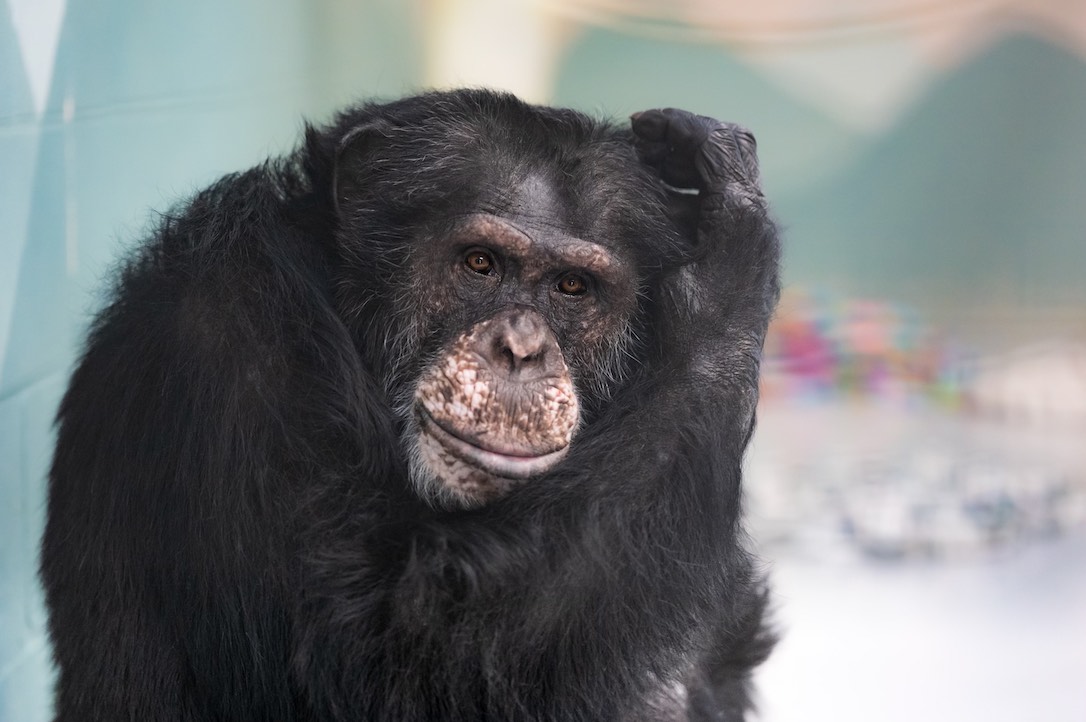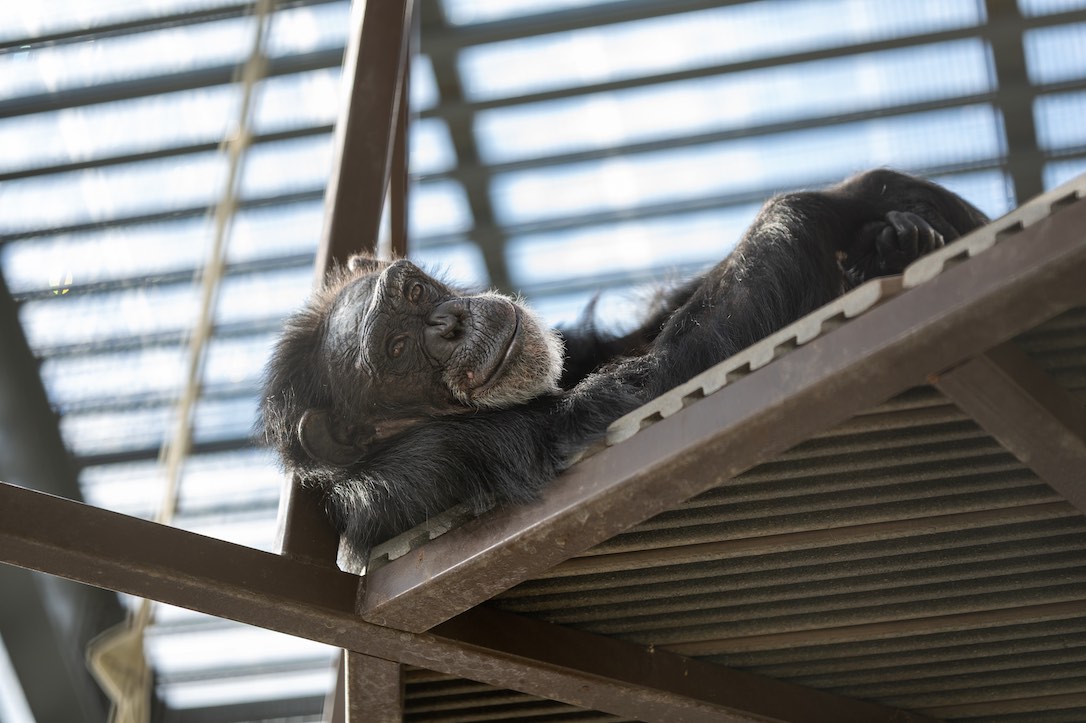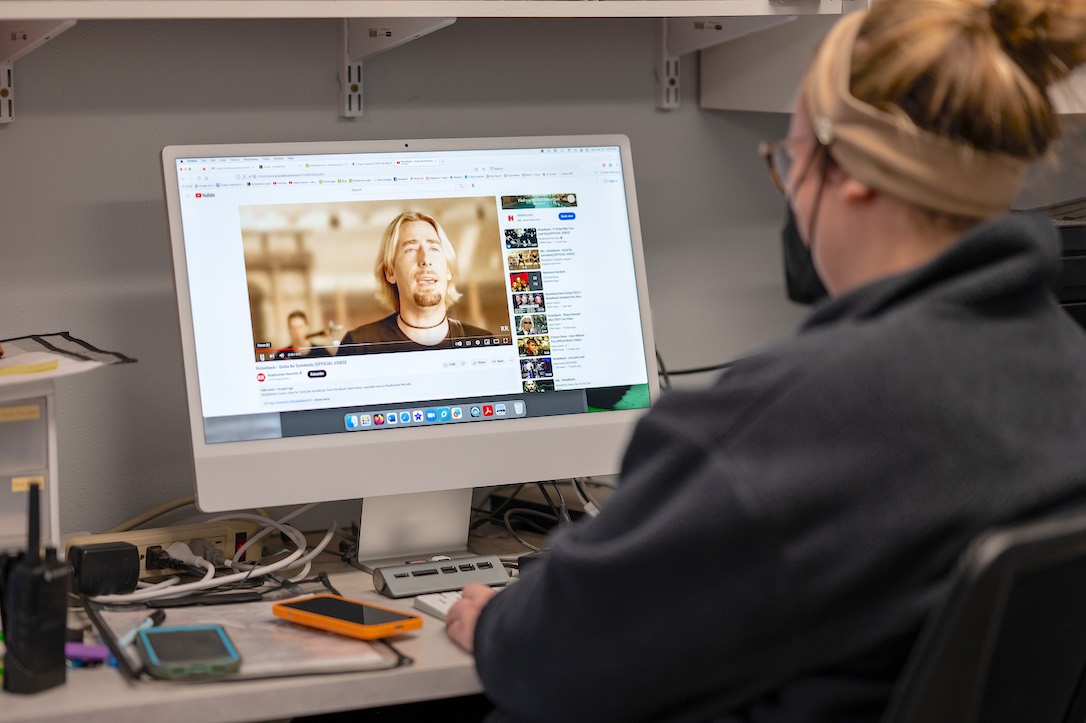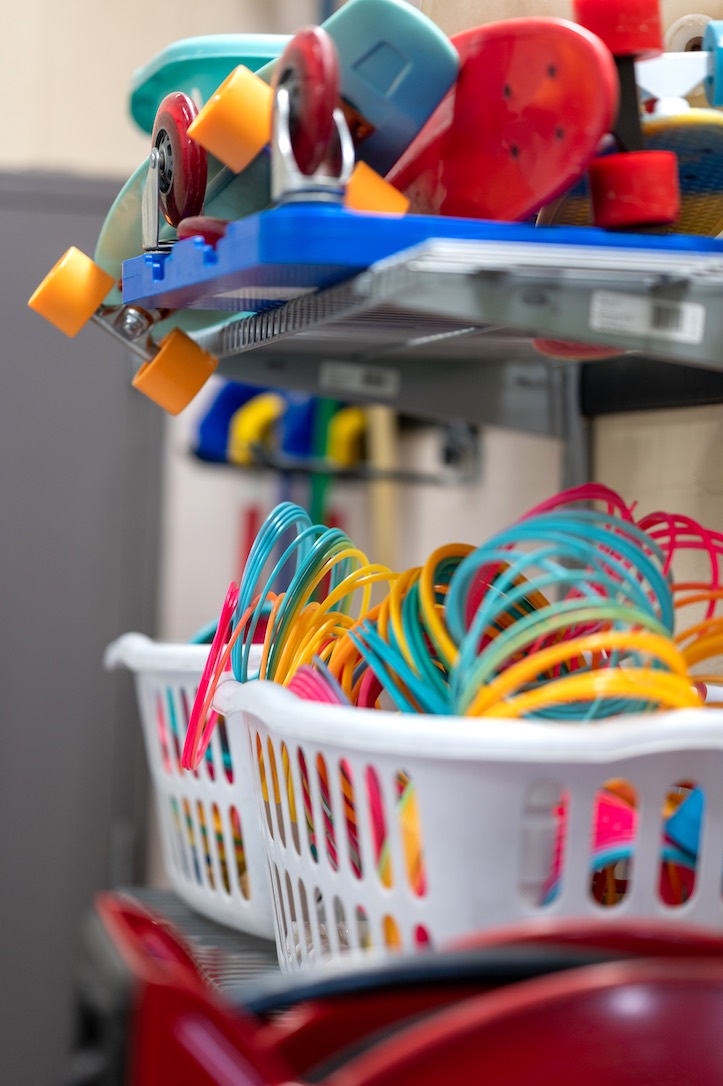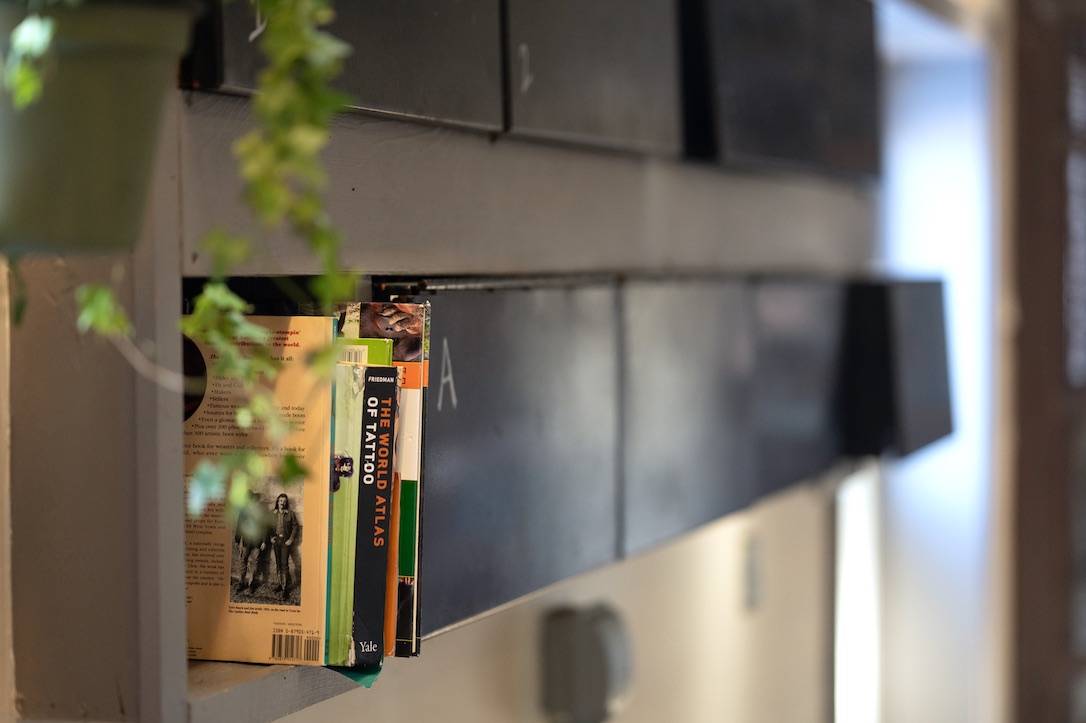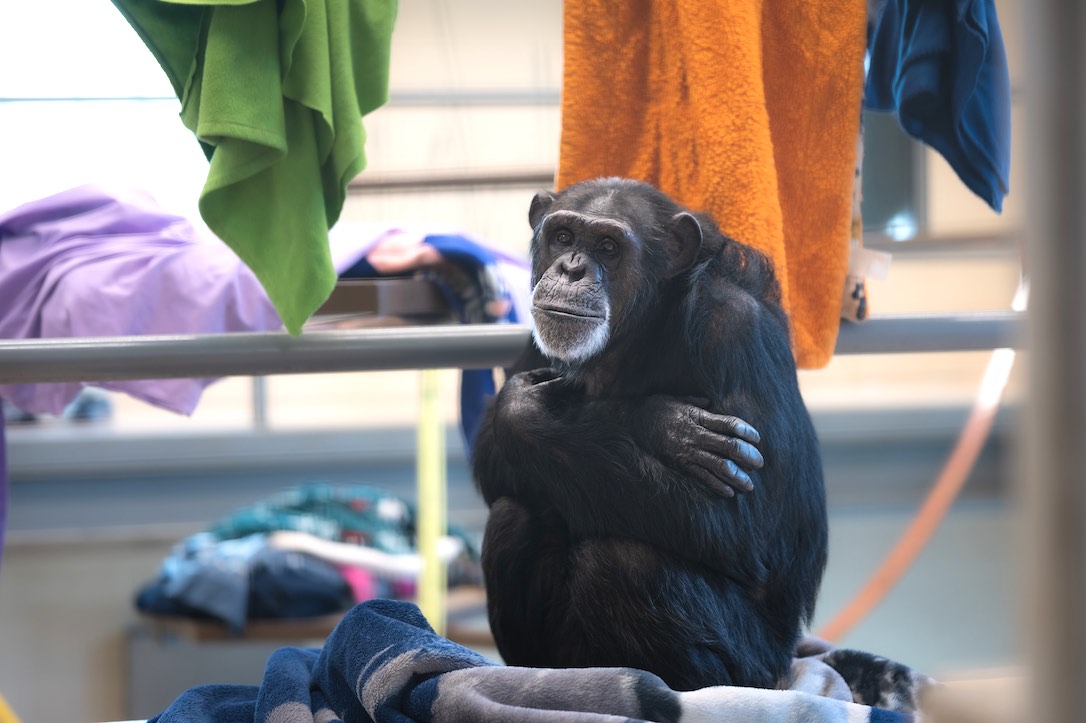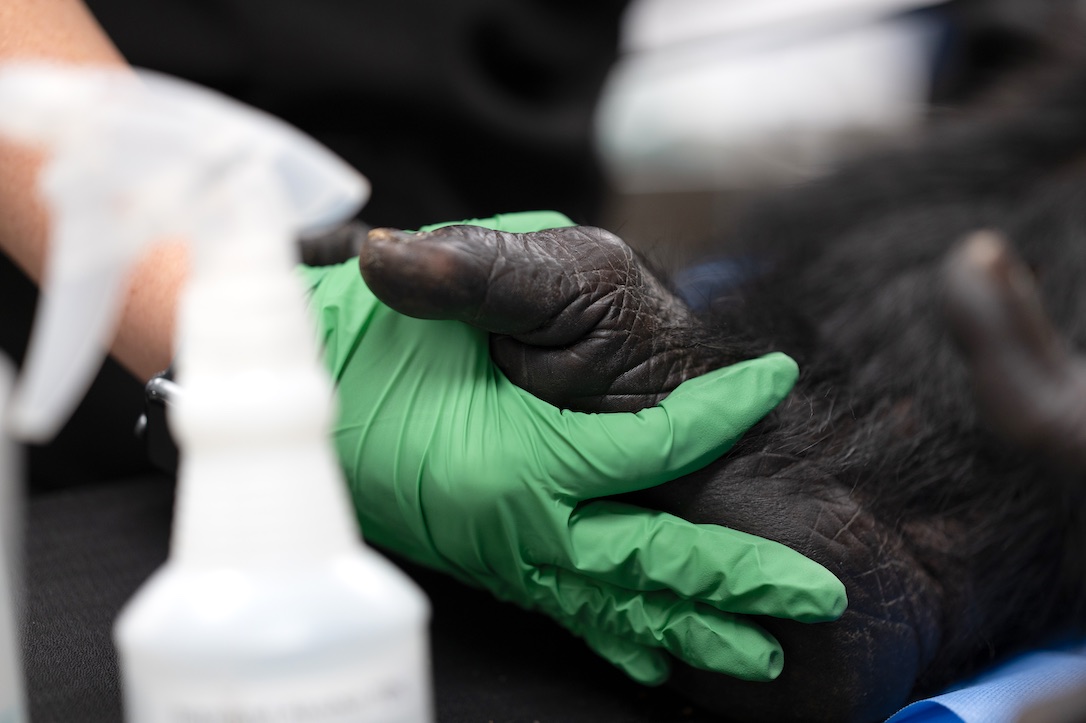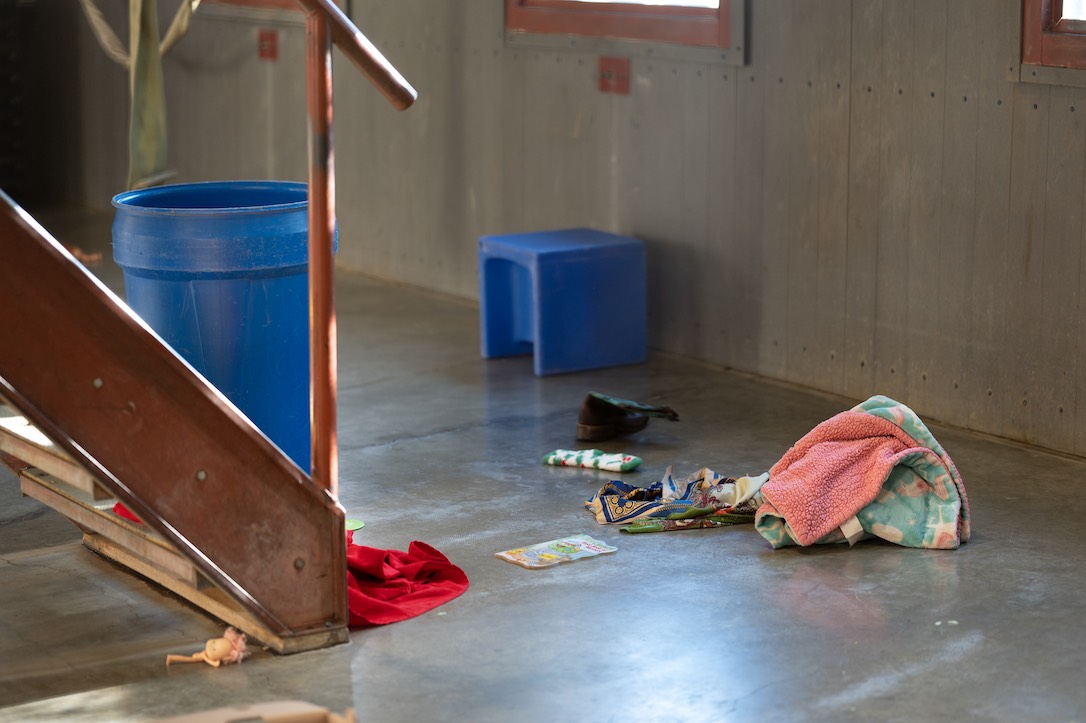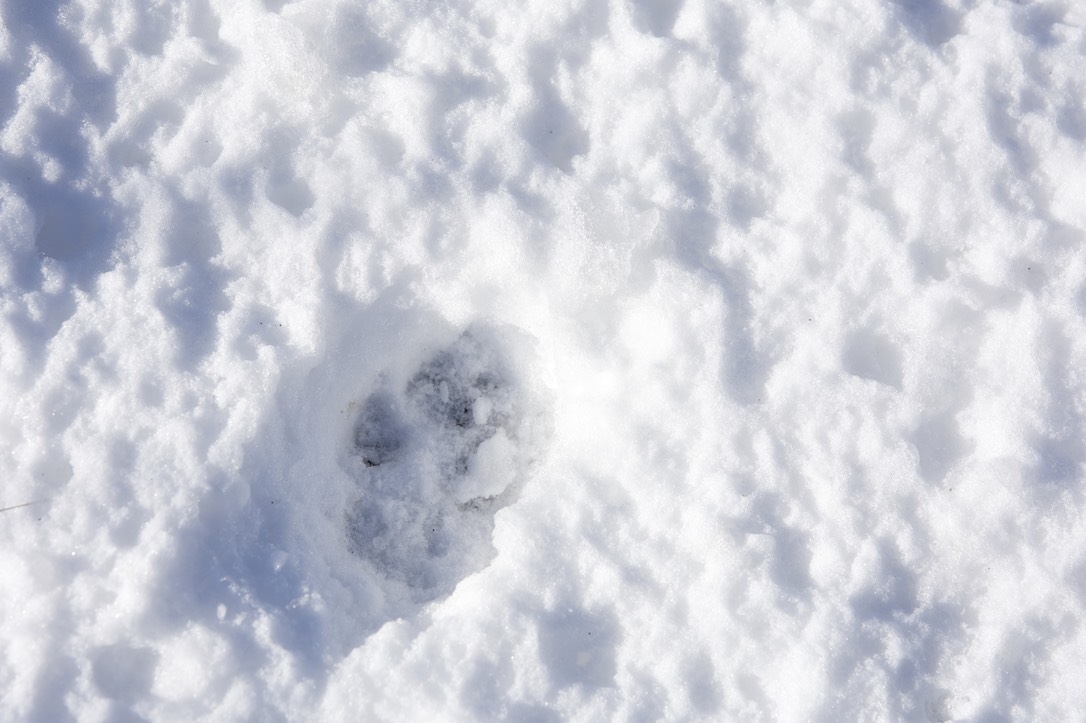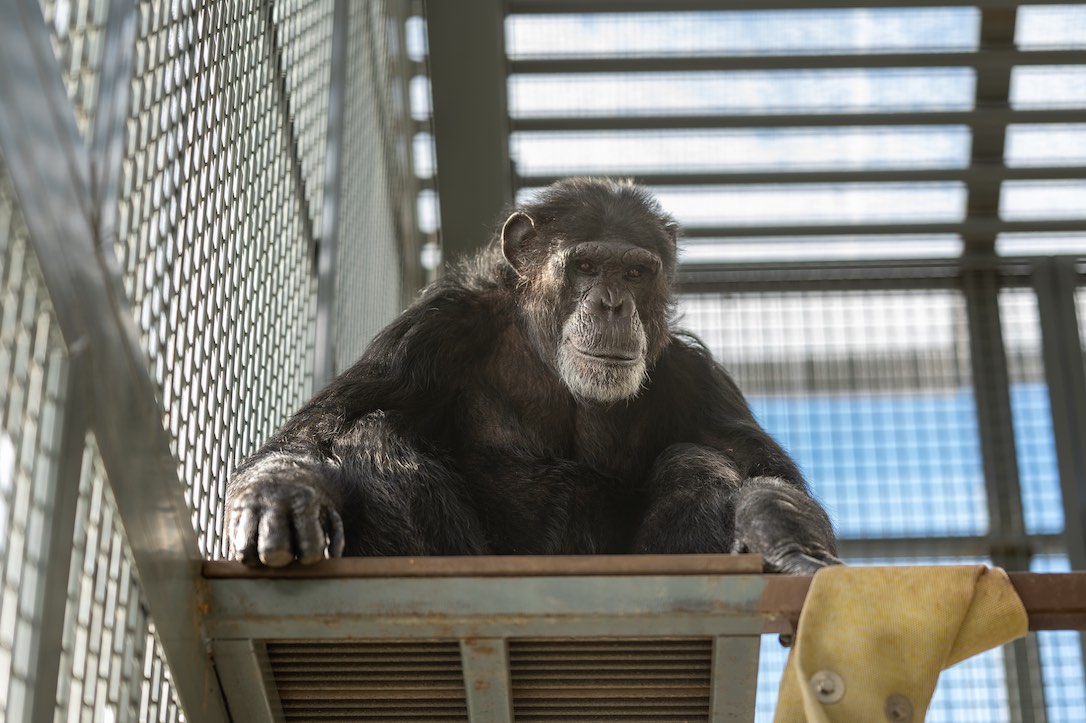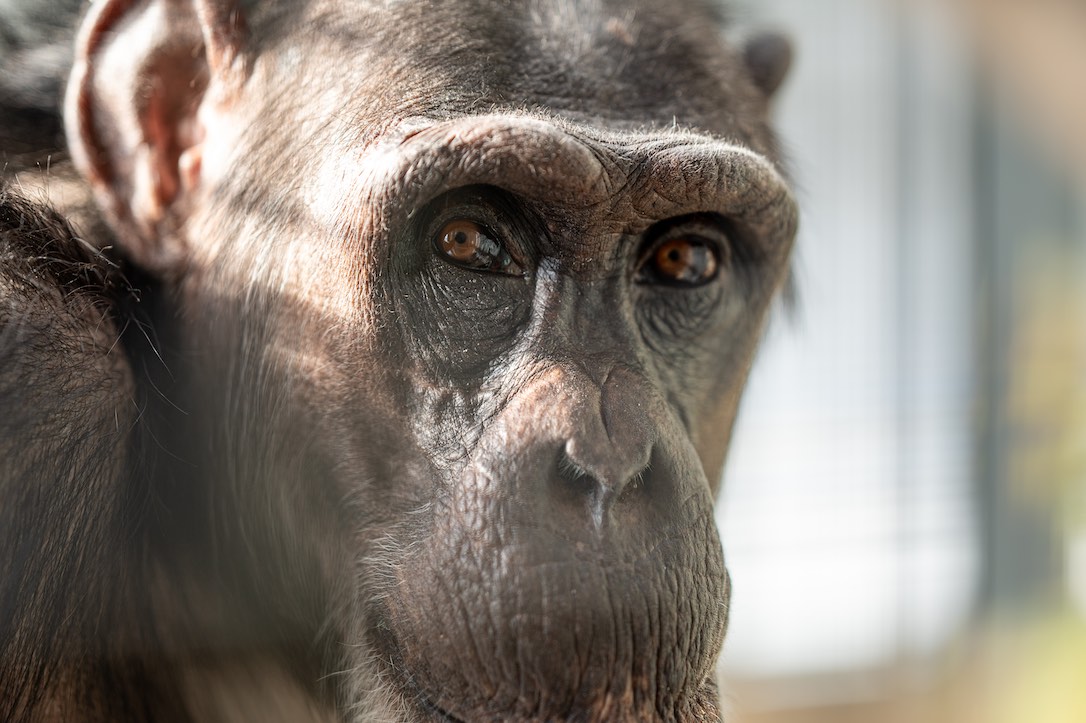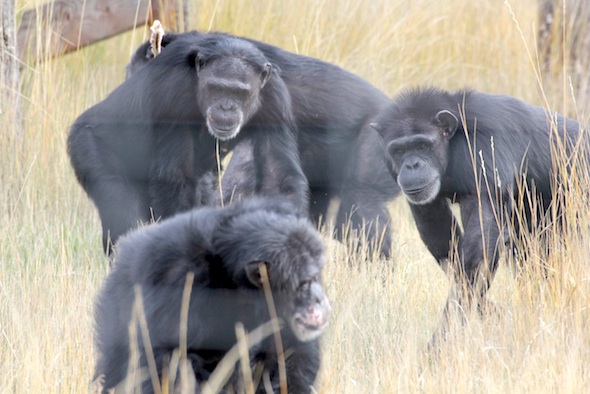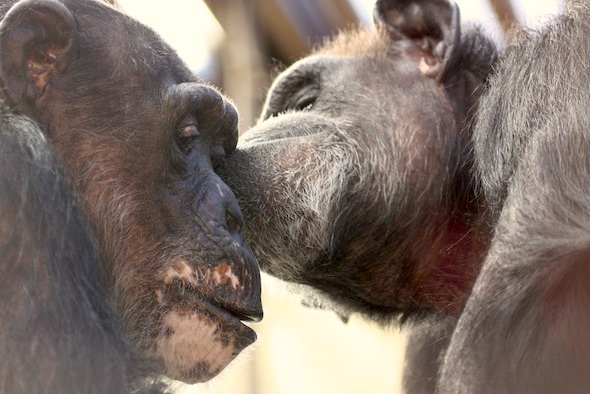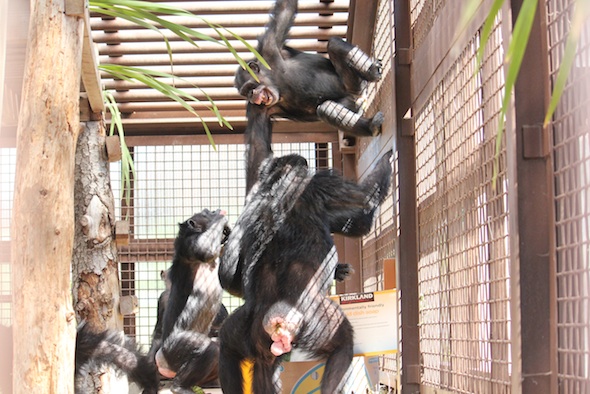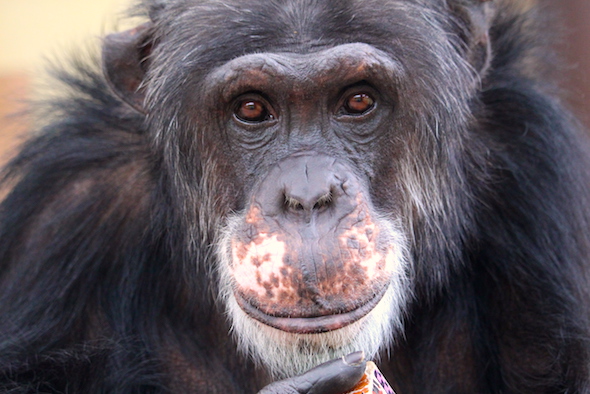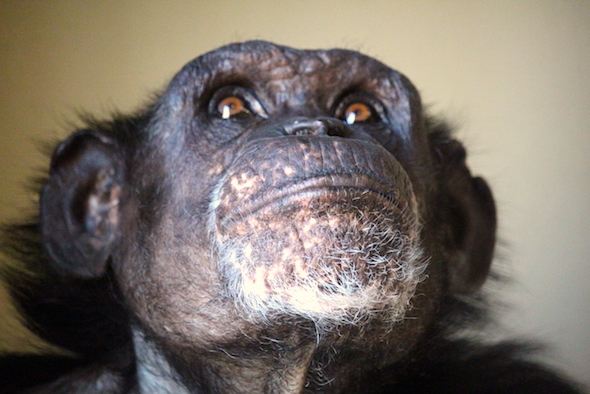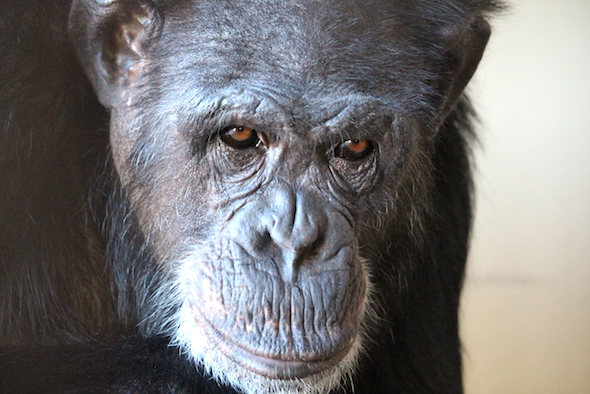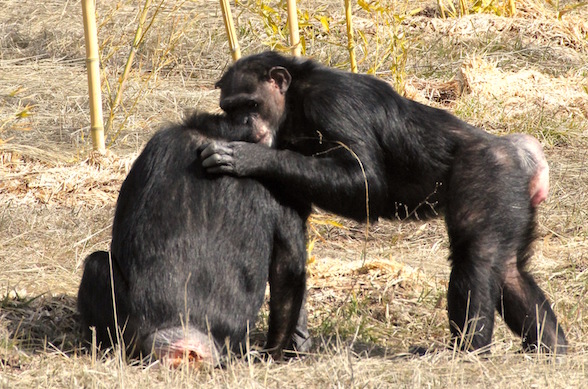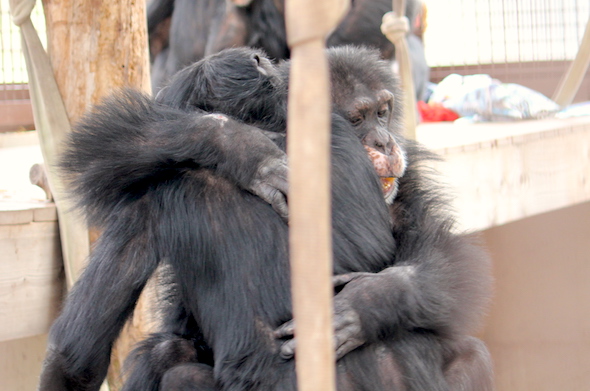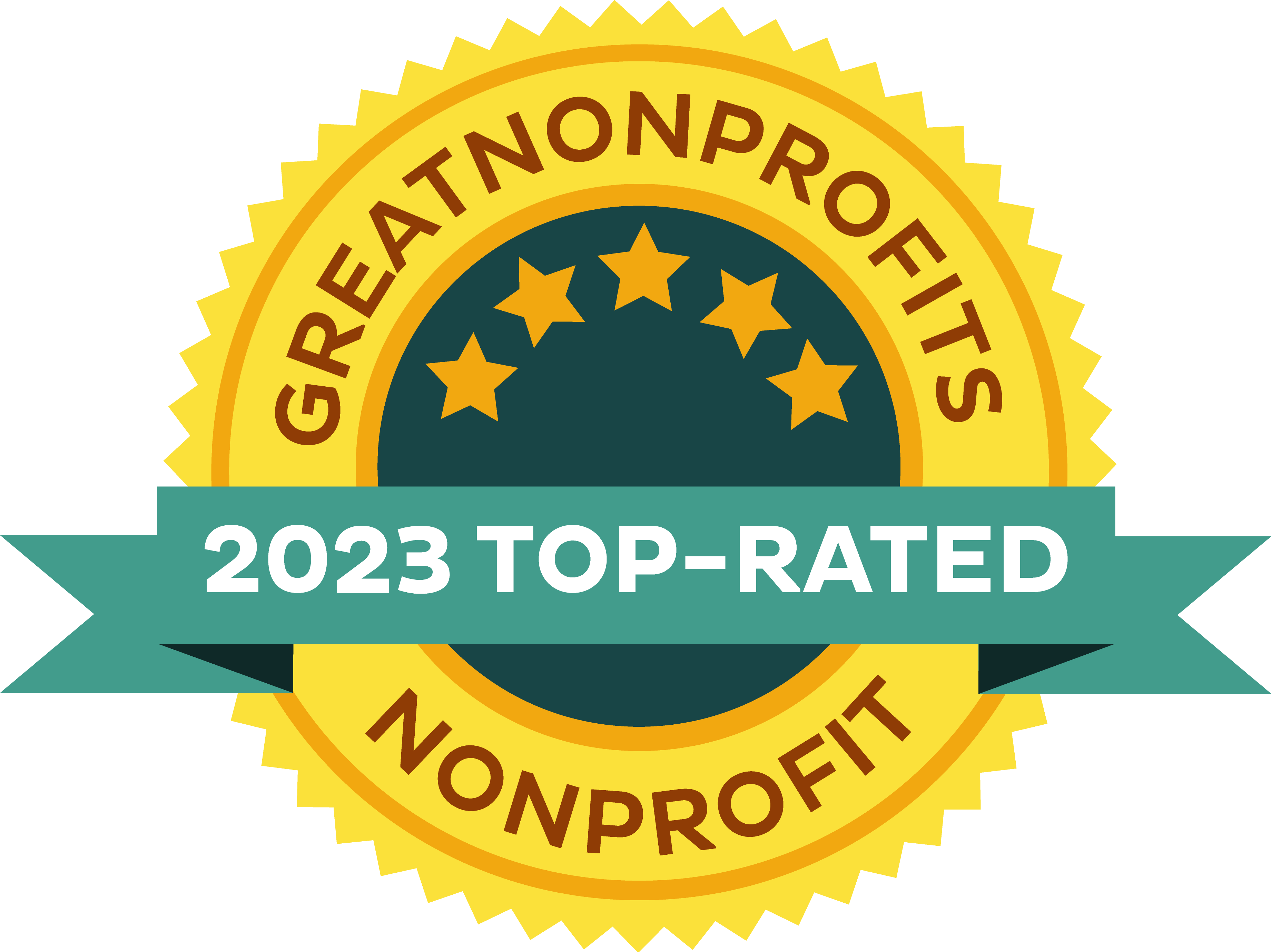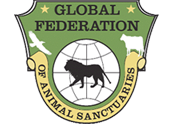Disclaimer: It’s after midnight and I’m drafting this blog post while listening to some of my favorite records. (Check out Turnover’s Peripheral Vision if you want to share my current vibe.) The post will be my 188th entry since I authored my first in the summer of 2019, and I am feeling a bit sentimental about it. I honestly don’t know how it’s going to come together. Right now it seems a bit disorganized, so you’ll have to forgive my excessive use of semicolons and parentheses (because one consequence of living with ADHD is that each thought “has a corresponding sub-thought” to go along with it).
Anyway, here it goes.
~~~~~~~~~~~~~~~~~~~~~~~~~~~
First and foremost, I want to simply thank everyone who attended yesterday’s virtual presentation. Jenna and I enjoyed showing you our training methods and responding to your thoughtful questions about chimpanzee behavior. Watching Diana’s recording of the live demonstration really drove home just how much progress these individuals have made recently, enabling us to take better care of them in tangible ways (e.g., Terry’s Procedure). Revamping the training program has been a rewarding project and it felt good to share some of our modest successes with all of you.
Now, as many of you already know, my time as a CSNW caregiver is quickly coming to an end and a new caregiver will soon fill my spot on the team. In fact, this Thursday will be my last day on the staff and in my role as the Health and Behavior Coordinator.
I’ve been a caregiver here at CSNW for three and a half years and previously spent two years as a student intern. In total, I have worked in primate sanctuaries for eight years and cared for and studied nonhuman primates in various capacities for over a decade. Like many people who pursue a career in this field, I spent my twenties scraping together my resources to embark on new adventures to remote places, collecting only stories and photographs along the way. My modest tenure here in Washington has actually been the most stable and longest of my adult life by a wide margin, meaning that CSNW and the surroundings are the closest thing I’ve had to a home since I left the one I grew up in.
Given how much this place has meant to me, I wouldn’t have withdrawn from my role here without careful deliberation. Indeed, I spent much of the past year considering how to balance my fondness for the sanctuary with my interest in mitigating human-wildlife conflict, my desire to spend more time with friends and loved ones who live further away, and my everlasting itch for new adventures.
Some of you have expressed curiosity regarding my next endeavor. Last month, I accepted an offer to be the new Wildlife Naturalist at PAWS Wildlife Center, located just north of Seattle. In addition to re-homing animals in need through their companion animal shelter, PAWS also cares for thousands of orphaned and injured animals each year through their wildlife center. As the team’s de facto biologist, my primary role will be to coordinate the releases of rehabilitated patients and document those events for storytelling and scientific purposes. I’ll also be doing outreach to help people coexist more compassionately and sustainably with Washington’s native wildlife, a cause that has been important to me for a long time. (If you need any further proof, just read the post where I “roasted the cat”.) PAWS is now in the process of building a new, state-of-the-art wildlife facility in nearby Snohomish, from the front door of which I will be able to see different faces of the same snow-capped mountains that peak peek at CSNW from behind the surrounding foothills.
One perk of staying in the Pacific Northwest for now is that I can still drive over the mountains to visit the sanctuary as long as the pass remains, uh, passable. I promised Anna that I will periodically volunteer, even if just to remain familiar with all the sanctuary’s primates and keep my squeegee skills on point. J.B. hinted that I should also help him install some new cabinets when they arrive next month (a reasonable expectation given that Sofia and I campaigned the loudest for more storage space in the clinic). I also asked if I could occasionally mow the lawn for free, just like Forrest Gump chose to do when he became a bazillionaire. Meanwhile, Diana has been giving not-so-subtle hints that I need to bring fresh vegan doughnuts from Seattle whenever I choose to swing by, which sounds like a fair deal for all involved.
On that note, instead of writing one last post about the chimpanzees or cattle, I have decided to use my remaining words to express heartfelt gratitude for all the humans who make CSNW the special place that it is.
The aforementioned co-directors Diana and J.B. are amazing role models to the staff and students here at the sanctuary, and their dedication to the cause is unrivaled. They do it all with witty humor, thoughtful self-assessment, and steadfast compassion for humans and non-humans alike. I have never seen two people put so much of their own eclectic personalities into a place without letting their egos get in the way. In fact, they might be two of the most humble individuals I’ve ever worked with, despite all of the sacrifices they’ve made to create a comfortable home for deserving chimpanzees, cattle, canines, cats, and even houseplants. I feel so fortunate to have them as mentors, and I hope I can keep learning from them through the organization’s bright future.
Our manager Anna has been a positive influence on me since I was an intern, not just as a young professional but also as an imperfect human trying to navigate a unique social environment. I’ve learned that her ability to connect with diverse people and penchant for finding practical solutions to complex problems are the two fabrics that hold this team together. I’m not sure if she’ll miss my incessant banter in the foyer when she’s trying to focus on her own blog posts, but I already have it in writing that she’ll miss some of my better qualities. She can’t take that praise back, no matter how much she might regret boosting my ego when I come back to help out.
As for the rest of the staff, they’re an incredible group of individuals and I am so glad I got to work alongside each and every one of them. This group includes:
Chad with his vast knowledge of chimp behavior, sly sense of humor, and “great head of hair”; Grace with her social media expertise, contagious snorty laughter, and enthusiasm for taking on new projects; Jenna with her eagerness to grow the training program, thoughtful contributions to conversations, and impressive cup-stacking skills; Katelyn with her unwavering concern for the well-being of all living creatures, ability to carry an entire cohort of troll dolls at once, and mysterious fascination with the occult that has us all just a little bit spooked; Kelsi with her team-oriented perspective, energetic efficiency, and dubious advice for stopping nosebleeds; Sofia with her confidence and tenacity in the vet clinic, spunky attitude, and habit of reminding us how warm the weather is in Puerto Rico whenever the Northwest goes a few weeks without sunshine; and Dr. Erin with her commitment to making the local community a safer and more inclusive place to live, tendency to show up to parties with a three-legged rescue pig, and willingness to do a deep dive into any obscure health condition that pops up unexpectedly.
The sanctuary also depends on effort given to us by an unparalleled team of volunteers, and I consider these people to be some of the most dedicated caregivers that I have ever met. They spend their available hours laboring alongside those of us on the payroll and have become part of the family in the process. This sentiment was only strengthened by the pandemic, during which a small group of eligible volunteers followed the tightest restrictions in order to continue assisting the staff and entertaining the chimps.
We also benefited greatly from the CWU students and faculty who still found ways to gather donations, create enrichment puzzles, and advocate for the chimps despite having to remain distanced from the sanctuary. I’d also be negligent if I failed to thank all of the talented people who have contributed to the expansion of the facility, allowing us to take in four cattle and nine more chimpanzees during my short time here. Foremost among them are Gary and the Sage Mechanical crew, who have grown to know and love the chimps and take pride in improving their home.
I also appreciate all the people who cared for the sanctuary’s residents in their previous living situations, with a special round of applause for the former staff of the Wildlife Waystation who are presumably responsible for allowing my good friend Honey B to become the adorable little spitfire that she is today. These humans made the best of untenable conditions in order to care for these remarkable individuals, ultimately helping them to reach their permanent sanctuary homes.
Even in the best environments, caring for captive primates is difficult. (Reminder: they don’t belong in captivity.) I can’t possibly explain to you all how emotionally burdensome it can be to grow attached to individuals who have tragic and traumatic backgrounds, complex social and biological needs, and the ability to act violently towards each other in ways we cannot always anticipate or control. When you also consider that even experts rarely agree on the best strategies for managing chimpanzees housed in captivity, making progress in this line of work proves to be incredibly complicated.
I also want you all to appreciate what caregivers go through just to get to the point where they have secure employment in the field. Most of us have taken out loans to pay for college degrees that are unlikely to return that investment, worked part-time service jobs so that we can afford to complete unpaid internships, and moved across the country once or twice to pursue job opportunities, straining our relationships with our friends, families, and partners.
If you happen to meet a chimpanzee caregiver in person, you should probably ask them if they need a hug, or perhaps invite them out to have a stiff drink. Alternatively, you could just write them a check.
Despite the arduous nature of caregiving and the adversity that humans face in this industry, we who have ended up here at CSNW all love what we do and who we do it for. I think I can safely speak for all of us when I say that the opportunity to care for these individuals and contribute to this organization has been worth all the hard times we have endured. I personally feel so fortunate to have served on this team for a few memorable years, and I look forward to being a member of the sanctuary’s extended family for many years to come.
Last, but certainly not least, I wish to express one final message of gratitude to all of you who follow the blog. As a supplement to the love we receive from our friends and families, your kind words have proven to be the suds in our buckets, the gasoline in our Gators, and the peanuts in our night bags. Your thoughtful questions and insightful commentary help us caregivers to put things in perspective and continue onward with purpose during tough times, and your dedication tells us that the words we write here can have a positive impact on the chimpanzees we care about so much.
So please keep reading along, keep watching the videos, keep sharing your feedback, keep asking questions, and keep giving to the sanctuary (if and when you are able to). It means more to us than you could possibly imagine.
Your friend,
Anthony
~~~~~~~~~~~~~~~~~~~~~~~~~~~~~~~~~~~~~~~~~~
P.S. Here are some photos for the road.
